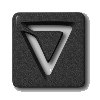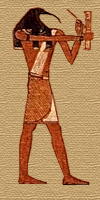 |
Snapshots showing results |
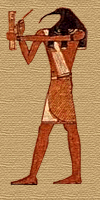 |
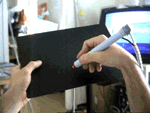 |
The hardware setup shown in the left image is composed out of a lightweigth (wooden) panel
and an in-house pen. Note the Polhemus Fastrak receiver mounted on the pen! |
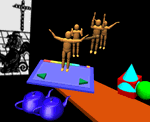 |
Following pictures show only renderings projected over real environment using
i-Glasses! see-trough head-mounted displays. Left image shows browsing objects from a palette and
drag&drop them to and from the surrounding scene. |
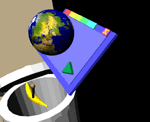 |
Objects not needed can be thrown into an automatic augmented trashcan standing in the room. |
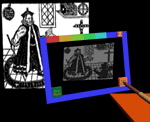 |
The Personal Interaction Panel can be used as a virtual photo camera to make snapshots
from the virtual scene. To make a 3D image the user simply places objects into the scene, arranges them and
shoots a photo from the desired camera position. |
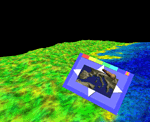 |
Navigating virtual landscapes becomes an easy task by showing a corresponding map on the
surface of the panel. The arrows provided on the PIP allow the scrolling of the landscape beneath the user. |
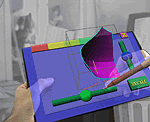 |
This montage shows what the user sees using our system. The virtual imagery is presented
to him as an overlay to the real environment. The image shows a sheet where a model of a dynamical system is
beeing modified and recalculated depending on the selected parameters. |
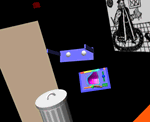 |
The virtual part of "Studierstube" shows a representation of a HMD where the users head is
positioned. This view can be used for remote observation of the system, while users work in the augmented
environment. |
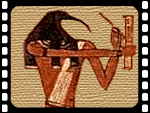 |
Quicktime videos |
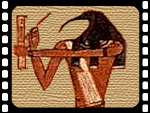 |
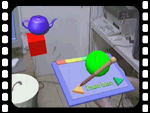 |
All clips have been recorded in real time on a Silcon Graphics O2 workstation. The O2 was
also used to mix a real video source with computer generated images for making these clips.
This sequence shows browsing objects from a palette and drag&drop them to and from the
surrounding scene. (6.6 MB Quicktime) |
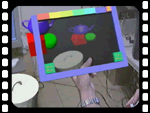 |
The Personal Interaction Panel can be used as a virtual photo camera to make snapshots
from the virtual scene. To make a 3D image the user simply places objects into the scene, arranges them and
shoots a photo from the desired camera position. (2.3 MB Quicktime) |
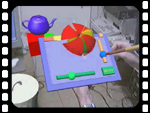 |
This sequence shows the investigation of a dynamical system. Scaling is done in a local
loop, using existing geometry from the model. Parameter modification of the system (width of the streamsurface
needs the recalculation of the model in a wide loop. (4.6 MB Quicktime) |
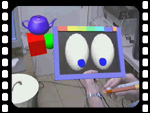 |
Why not doing nonsense with this interface ... ? (2.0 MB Quicktime) |
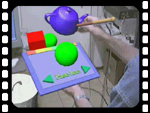 |
This is the last part of the video presented at EUROGRAPHICS '97.
As many people use our environment it is important to clean up after yourself! (4.4 MB Quicktime) |
